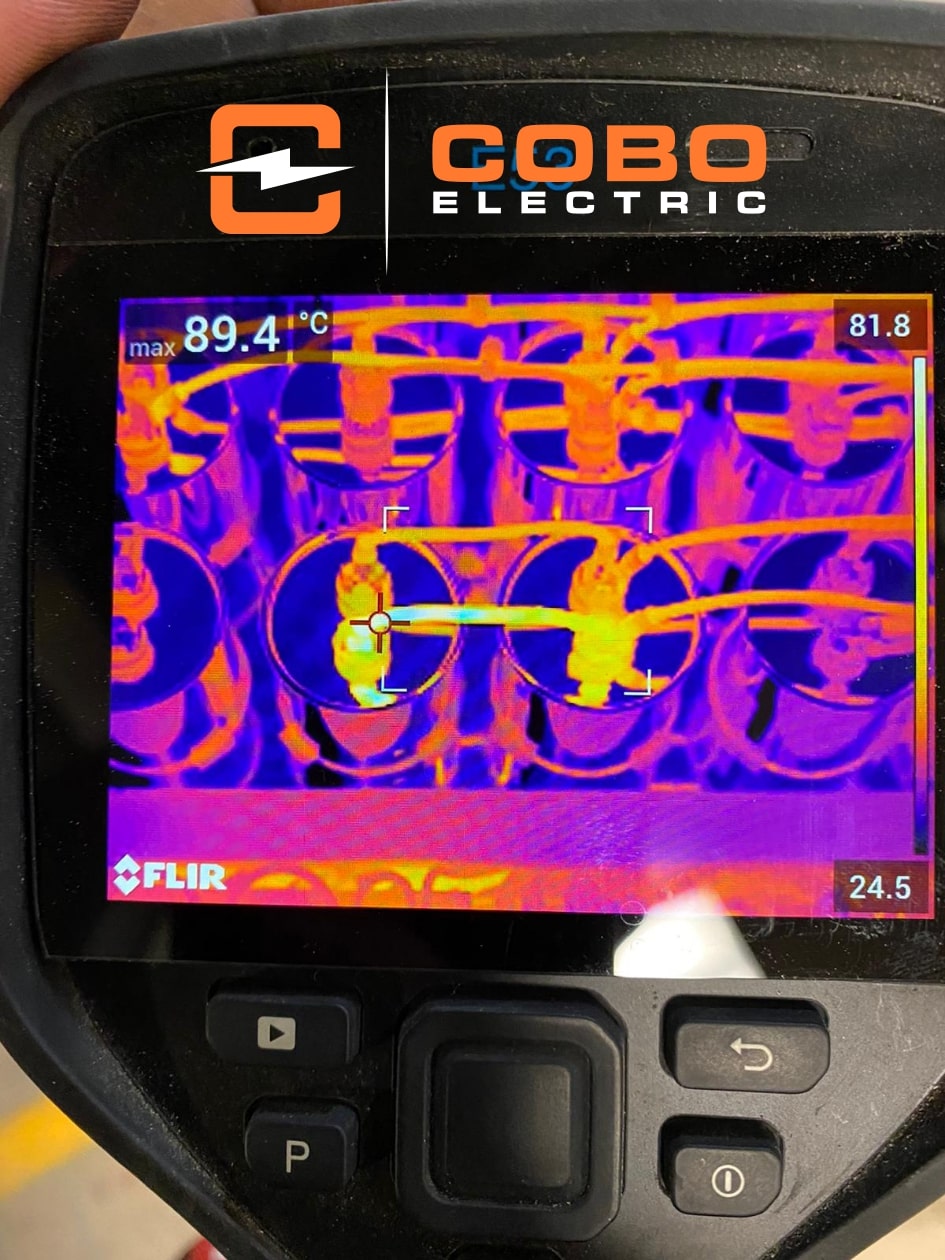Infrared thermography of electrical installations falls under classification of Predictive Maintenance, a type of electrical inspection.. The value is that we are now able to predict an electrical fault before the element fails completely. Most importantly, we can detect these faults in a non-invasive way. Meaning we don’t have to stop production or take apart a motor.
Infrared thermography
We are able to get this due to the heat build-up of any electrical element under stress and predict that it will fail while it is still functional and appears normal to the naked eye or any other test equipment. The heat signature identified with the use of an Infrared camera during an electrical inspection. We analyze these pictures and assemble a report stating our findings during the electrical inspection. We point out in the report the problem areas, and the dangerous temperature it was registered at. We can also rectify a recommendation on how to repair it before a breakdown occurs, preventing loss of production due to unplanned downtime.
Unexpected outages in the electrical system can be inconvenient and costly to the production. Infrared electrical thermography is a useful tool that can recognize stressed elements of your electrical installation before they break down or cause a fire. This gives you the opportunity to solve the problem as part of planned maintenance before it causes a serious problem.
Another result of failed or stressed electrical elements is the risk of fire; in fact the risk is more real than commonly realise. It is in this vein that insurance companies are increasingly calling for infrared electrical thermography surveys as a valuable risk assessment aid. Read more about reducing insurance premiums here.
In the past this service was only available to very large companies and mining houses due to the cost determinant, but as with everything there have been massive advancements in the last few years and infrared thermography has now become a very profitable tool in the small to medium size business world.
Electrical Inspection
Maintenance includes vibration analysis on machines, audio, ultrasonic and infrared thermography inspection on electrical systems. Infrared thermography is used to recognize equipment hot spots. This task is typically carried out using temperature sensing instruments like thermocouple sensors or other forms of thermometers. Limitation of this analysis is that this kind of instrument can give maintenance personnel only with temperature readings on certain spots but not overall electrical system.

Thermography inspection generally uses infrared instrumentation to scan and create a temperature profile of intended targets. In a typical manufacturing plant, Infrared thermography inspections did on electrical systems such as electrical switchboards, high-voltage distribution equipment motors, corresponding controllers, transformers and other control panels.
Switchgear Thermography
A great deal of investment is presently being made installation of thermal viewing ports for switchgear. These ports allow infrared inspections to carry out without removing switchgear covers, thus it would avoid worker arc-flash exposure. Installation of permanent infrared sensors and continuous infrared monitors are also reasonable methods for recognizing potential thermal failures of critical equipment. The principle of outdoor switchgear assembly is often compromised by defective strip heaters. The strip heaters increase the switchgear temperature slightly above ambient to prevent condensation during daily or seasonal temperature changes. Functionality of these strips heaters and their effectiveness to carry out this duty can decide by carrying out thermal imaging of the switchgear enclosures. In other words, and once again, absence of heating identifies a potential problem.
Benefits of Infrared Thermography Inspection
A major insurance carrier estimates that nearly 25 percent of all electrical failures attributed to faulty electrical connections. Therefore, many insurance firms are the driving force behind requiring facilities to conduct annual infrared surveys. Infrared technology has evolved into one of the most effective technologies for preventing failures and added benefit of not requiring an outage to carry out. Several further benefits of infrared technology can be found on our previous article, thermal imaging benefits.

